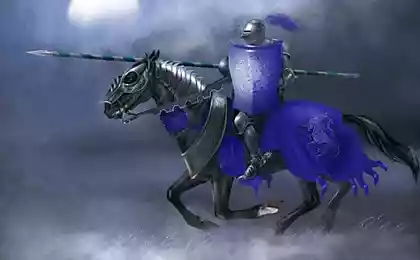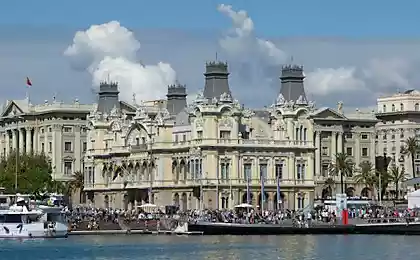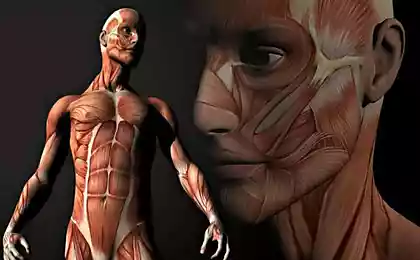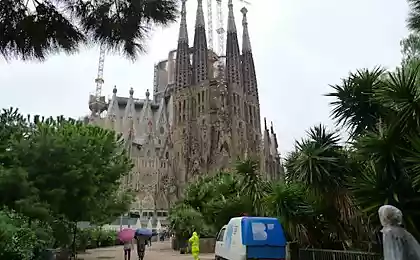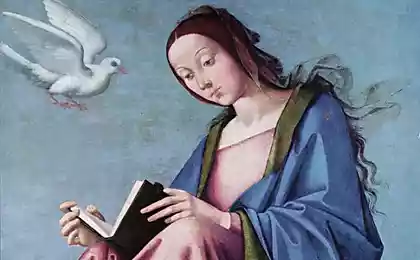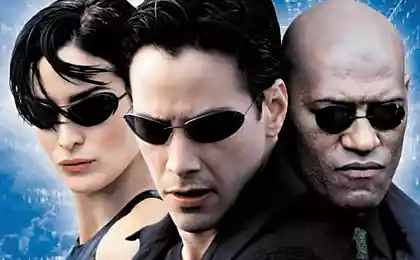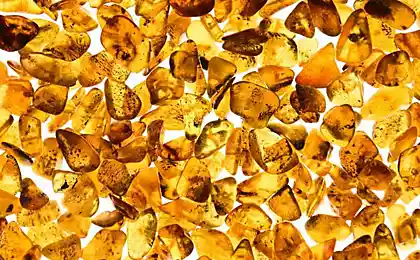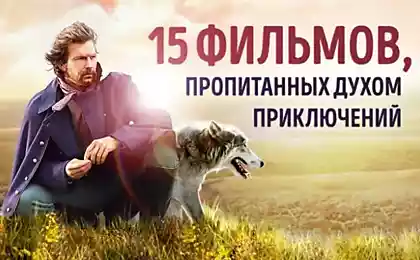2167
10 interesting facts about the Knights (10 photos)
From the legend of the Knights of the Round Table to the film "Game of Thrones" in our culture is no shortage of tales about the exploits of knights. More surprising fact how little we really know about them. It is known that they wore armor and fought in wars and tournaments ... but what else do they do? How do they live?

10. Crossbow
Knights were the most powerful warriors on the battlefield for centuries and had the conventional wisdom that no one can ever beat them. Oddly enough, but very simple invention as crossbow jeopardize their unshakable power.
Crossbow, invented in the 12th century, was a kind of super onions. It was made of steel and can withstand more stress than usual bows and produce a more powerful blow. Crossbow beat at 300 meters, relatively quickly it can be recharged and manipulate them. Arrows fired from a crossbow that could pierce metal armor. Thus, the mighty knight, who owned only fighting skills and fancy armor, became the target of a simple soldier with a crossbow. And learn how to shoot a bow this can be just a few weeks. An experienced archer may of two knights in a minute remaining in the security.
While the Knights did not recognize crossbows, it was clear that their time has expired invincible warriors, especially when it was soon invented gunpowder weapons.
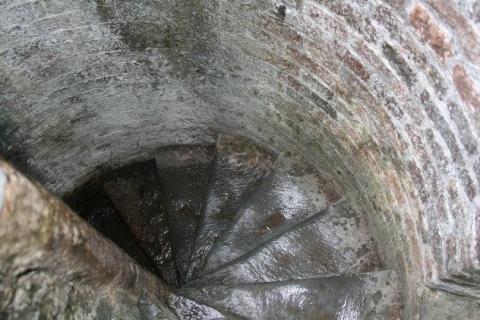
9. Spiral staircase
In many medieval castles have spiral staircases between floors. They tend to be adjacent to the wall of the fortress (the tower staircase, as a rule, passed along the outer walls and the rooms were built in the middle).
At first glance, such a plan could be explained by the desire of construction to save space, but in fact spiral staircases were invented for defensive purposes ... If the enemy army invaded the castle of the Knights was pretty hard to climb up the narrow curved staircase and at the same time to fight.
Some features of the architecture allowed defenders additional benefits. Medieval spiral staircases have been designed so that they are in a clockwise direction up. This meant that the enemy knights were supposed to protect the left side, which was a serious problem for them, since almost all the knights wielded the sword with his right hand.
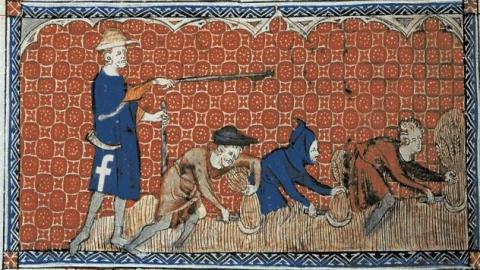
8. Cash costs
Being a knight was extremely expensive. Armor, weapons, horses, and servants, all cost a lot of money compared to normal living expenses. As skilled warriors on horseback, knights were an important component of any army, so that the rulers had to provide them with a livelihood.
The solution to this problem was the service system of the Knights, in which a knight isolated piece of land, and in fact, people living on this land, which was called a fief knight. Knight was a tenant of land from the Lord, with the right to rule over his fiefdom as he saw fit. In return, the Lord could call for help knight and his men to fight in his army.
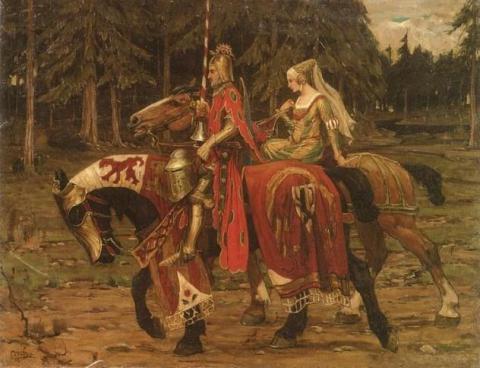
7. Advantages knight
Nobility was the basis of chivalrous behavior. Its boundaries were poorly defined and often went beyond the limits of everyday life. Codes of conduct and etiquette were very strict, but their essence can be reduced to the basic knight vows. Knight never have to deal with traitors. He must never harm a woman (regardless of her marital status), it should always treat her with respect and protect her from any danger. Moreover, he must fast and abstain from worldly temptations, attend daily church services and make donations to the church.
The last of these vows, apparently, was imputed clergymen. When they decided to make the first crusade 11th century, they came up with a cunning plan to bring the Knights to the fulfillment of their mission. The church has introduced its own code of conduct knights, and all the knights were to follow him. No wonder that in this code, first of all, the rules were aimed at maintaining the church and Christianity.
Although chivalrous behavior was common at social events, many forget about the main aspects knighted on the battlefield. Instead, many of them ruthlessly murdered and robbed as they wanted. They were soldiers and, in the end, they preferred to avoid the risk of being killed than be noble with his opponent.
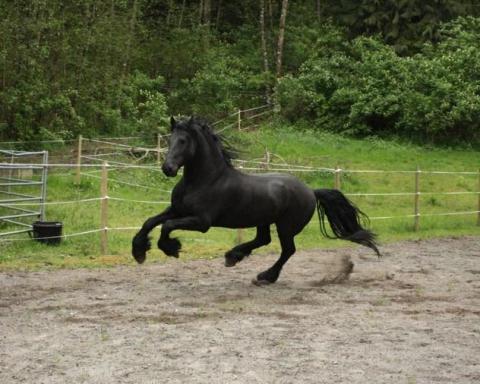
6. The emergence of chivalry
Knights always associated with horses. Strong horses in their armored armor, have been specially trained for battle. It is therefore considered that the concept of chivalry comes from the ancient troops on horseback. Ancient knights appeared in the heyday of the Roman Empire. The ancient Romans had an elite cavalry «Ordo Equestris».
Although still «Ordo Equestris» can not be called patriarchs knights they had much in common with the knights of the Middle Ages - they were less notable, but they fought on horseback and enjoyed considerable respect their fundamentals compatriots. When Charlemagne, Emperor of the Franks, in the ninth century, gave representatives of the nobility concept of feudalism, there was a knighthood.
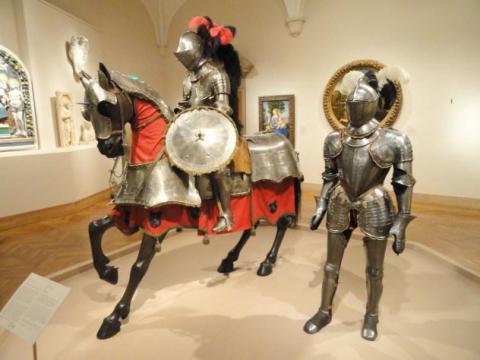
5. Weapons
Neither Knight did not appear on the battlefield, without their armor. Armor had to be made to order (armor was made of metal or other rigid materials, and it was important that they were compared as best as possible). Over time, the garment became stronger and stronger armor originally consisted of the usual soft clothes and chain mail. Over time, the armored elements were added, and finally fully armored armor (such as presented in the most movies). Armor was heavy and weighed about 50 pounds. But they are protected from impacts of any knight of the Middle Ages weapons.
Quality and power armor served not only for defensive purposes, but it is a symbol of status. The better the armor, the more important was a knight.
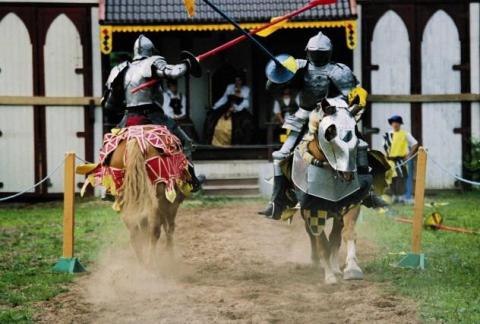
4. The Joust
Jousting was not just an occupation that knights engaged in the interwar period. In fact, at a time when the fights became a popular sport and social event, there was not a lot of wars.
Fights became a sort of training and preparation for battle. However, when the Crusades ceased, and there were no more wars, fights began medieval sport. Popular activities include pas d'Armes, where the knight had to fight with a group of opponents, as well as the kind of competition, when knights were divided into two teams that fought each other without horses.
Surprisingly, the jousting on horseback were not as popular as the teams will compete knights.
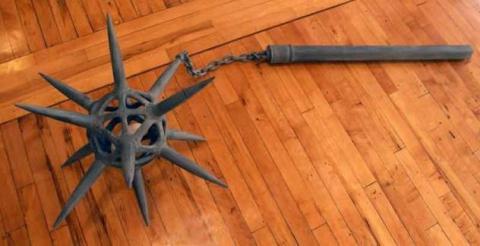
3. Training
Preparation knight starts at age 7, and then lasted 14 years. Future Knight, first served as a page. At this point he was only a boy-servant, who was running for his master. Although most of his training took place in the form of various games and sports, it was a very serious training. Instead of toys and figurines, medieval page played clubs and learned the art of riding.
At age 14, he became a squire. Each squire usually subordinate to some knight, helping him to dress and take care of his armor and weapons. The young squire was ready to fight on the battlefield. His training became more and more dangerous. Injuries were common, and such traditional knightly skills as jousting and competitions on sticks were part of the training.
At 21, the squire finally initiated into the knights. Knighted was originally very simple and fast -dvoryanin, performed the ceremony, just touched the back of the head squire and uttered a few words. In consequence, the clergy have added the words to give the dedication ceremony of solemnity.

2. The Crusades
The Crusades were aimed at the liberation of the Holy Land from the Muslims. For centuries, hikes were the main task of the Knights. It is known that there were only a few of the Crusades, but in reality they were much more. The Crusades were a constant religious war which lasted for nearly 200 years. There were eight major Crusades and many smaller ones in between.
Unfortunately, the original purpose of the Crusades was not achieved knights eventually passed to the Holy Land to the Saracens. However, this did not prevent the church, in the next few centuries, organize campaigns against their political opponents in Europe.
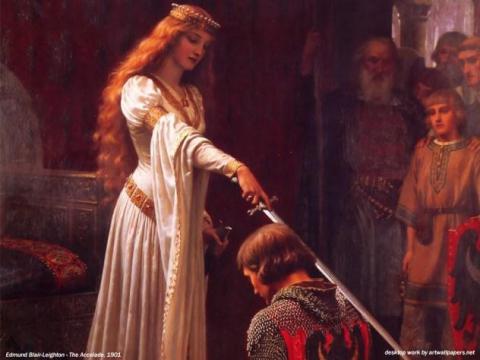
1. Modern Knights
Since 1560, chivalry, in fact, ceased to exist as a military concept. There are a few hereditary knights, but most of them were given the status of the merits of their forefathers. Although there are still many orders of chivalry, most of which were created after the Middle Ages, and the main purpose of which was the accentuation of certain dignity. For example, in our time, the knights were such famous people like Sir Elton John, Judi Dench and Sir Paul McCartney.
Source Your text to link ...

10. Crossbow
Knights were the most powerful warriors on the battlefield for centuries and had the conventional wisdom that no one can ever beat them. Oddly enough, but very simple invention as crossbow jeopardize their unshakable power.
Crossbow, invented in the 12th century, was a kind of super onions. It was made of steel and can withstand more stress than usual bows and produce a more powerful blow. Crossbow beat at 300 meters, relatively quickly it can be recharged and manipulate them. Arrows fired from a crossbow that could pierce metal armor. Thus, the mighty knight, who owned only fighting skills and fancy armor, became the target of a simple soldier with a crossbow. And learn how to shoot a bow this can be just a few weeks. An experienced archer may of two knights in a minute remaining in the security.
While the Knights did not recognize crossbows, it was clear that their time has expired invincible warriors, especially when it was soon invented gunpowder weapons.

9. Spiral staircase
In many medieval castles have spiral staircases between floors. They tend to be adjacent to the wall of the fortress (the tower staircase, as a rule, passed along the outer walls and the rooms were built in the middle).
At first glance, such a plan could be explained by the desire of construction to save space, but in fact spiral staircases were invented for defensive purposes ... If the enemy army invaded the castle of the Knights was pretty hard to climb up the narrow curved staircase and at the same time to fight.
Some features of the architecture allowed defenders additional benefits. Medieval spiral staircases have been designed so that they are in a clockwise direction up. This meant that the enemy knights were supposed to protect the left side, which was a serious problem for them, since almost all the knights wielded the sword with his right hand.

8. Cash costs
Being a knight was extremely expensive. Armor, weapons, horses, and servants, all cost a lot of money compared to normal living expenses. As skilled warriors on horseback, knights were an important component of any army, so that the rulers had to provide them with a livelihood.
The solution to this problem was the service system of the Knights, in which a knight isolated piece of land, and in fact, people living on this land, which was called a fief knight. Knight was a tenant of land from the Lord, with the right to rule over his fiefdom as he saw fit. In return, the Lord could call for help knight and his men to fight in his army.

7. Advantages knight
Nobility was the basis of chivalrous behavior. Its boundaries were poorly defined and often went beyond the limits of everyday life. Codes of conduct and etiquette were very strict, but their essence can be reduced to the basic knight vows. Knight never have to deal with traitors. He must never harm a woman (regardless of her marital status), it should always treat her with respect and protect her from any danger. Moreover, he must fast and abstain from worldly temptations, attend daily church services and make donations to the church.
The last of these vows, apparently, was imputed clergymen. When they decided to make the first crusade 11th century, they came up with a cunning plan to bring the Knights to the fulfillment of their mission. The church has introduced its own code of conduct knights, and all the knights were to follow him. No wonder that in this code, first of all, the rules were aimed at maintaining the church and Christianity.
Although chivalrous behavior was common at social events, many forget about the main aspects knighted on the battlefield. Instead, many of them ruthlessly murdered and robbed as they wanted. They were soldiers and, in the end, they preferred to avoid the risk of being killed than be noble with his opponent.

6. The emergence of chivalry
Knights always associated with horses. Strong horses in their armored armor, have been specially trained for battle. It is therefore considered that the concept of chivalry comes from the ancient troops on horseback. Ancient knights appeared in the heyday of the Roman Empire. The ancient Romans had an elite cavalry «Ordo Equestris».
Although still «Ordo Equestris» can not be called patriarchs knights they had much in common with the knights of the Middle Ages - they were less notable, but they fought on horseback and enjoyed considerable respect their fundamentals compatriots. When Charlemagne, Emperor of the Franks, in the ninth century, gave representatives of the nobility concept of feudalism, there was a knighthood.

5. Weapons
Neither Knight did not appear on the battlefield, without their armor. Armor had to be made to order (armor was made of metal or other rigid materials, and it was important that they were compared as best as possible). Over time, the garment became stronger and stronger armor originally consisted of the usual soft clothes and chain mail. Over time, the armored elements were added, and finally fully armored armor (such as presented in the most movies). Armor was heavy and weighed about 50 pounds. But they are protected from impacts of any knight of the Middle Ages weapons.
Quality and power armor served not only for defensive purposes, but it is a symbol of status. The better the armor, the more important was a knight.

4. The Joust
Jousting was not just an occupation that knights engaged in the interwar period. In fact, at a time when the fights became a popular sport and social event, there was not a lot of wars.
Fights became a sort of training and preparation for battle. However, when the Crusades ceased, and there were no more wars, fights began medieval sport. Popular activities include pas d'Armes, where the knight had to fight with a group of opponents, as well as the kind of competition, when knights were divided into two teams that fought each other without horses.
Surprisingly, the jousting on horseback were not as popular as the teams will compete knights.

3. Training
Preparation knight starts at age 7, and then lasted 14 years. Future Knight, first served as a page. At this point he was only a boy-servant, who was running for his master. Although most of his training took place in the form of various games and sports, it was a very serious training. Instead of toys and figurines, medieval page played clubs and learned the art of riding.
At age 14, he became a squire. Each squire usually subordinate to some knight, helping him to dress and take care of his armor and weapons. The young squire was ready to fight on the battlefield. His training became more and more dangerous. Injuries were common, and such traditional knightly skills as jousting and competitions on sticks were part of the training.
At 21, the squire finally initiated into the knights. Knighted was originally very simple and fast -dvoryanin, performed the ceremony, just touched the back of the head squire and uttered a few words. In consequence, the clergy have added the words to give the dedication ceremony of solemnity.

2. The Crusades
The Crusades were aimed at the liberation of the Holy Land from the Muslims. For centuries, hikes were the main task of the Knights. It is known that there were only a few of the Crusades, but in reality they were much more. The Crusades were a constant religious war which lasted for nearly 200 years. There were eight major Crusades and many smaller ones in between.
Unfortunately, the original purpose of the Crusades was not achieved knights eventually passed to the Holy Land to the Saracens. However, this did not prevent the church, in the next few centuries, organize campaigns against their political opponents in Europe.

1. Modern Knights
Since 1560, chivalry, in fact, ceased to exist as a military concept. There are a few hereditary knights, but most of them were given the status of the merits of their forefathers. Although there are still many orders of chivalry, most of which were created after the Middle Ages, and the main purpose of which was the accentuation of certain dignity. For example, in our time, the knights were such famous people like Sir Elton John, Judi Dench and Sir Paul McCartney.
Source Your text to link ...
